20 Feathered Reasons Costa Rica Should Be Your Next Travel Destination
Costa Rica is home to 20 beautiful birds that will catch your eye with their bright colors and sweet songs. This peaceful place is great for anyone who loves watching birds and enjoying nature.
Jabiru Stork

While not as well known as the parrots or brightly colored birds of the list the Jabiru stork is one worth seeing. Standing nearly 4 feet tall with a black featherless head the Jibaru is an unmistakable bird. These birds are well known for building nests up to 6 feet in diameter. Sadly it is estimated there are less than 100 individuals in costa Rica, seeing one should be cherished. With hard work and conservation, we can all hope their numbers rebound.
Scarlett Macaw
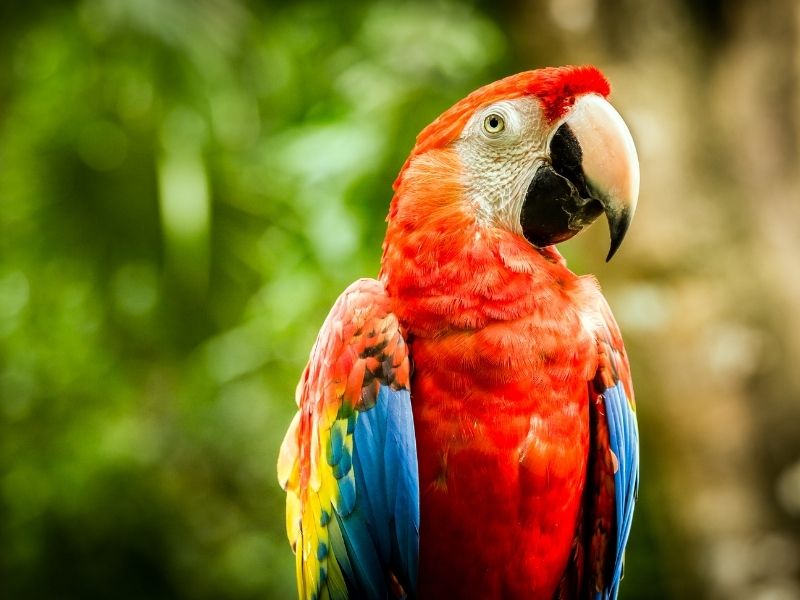
Nesting and living in colonies of 300 or more, the scarlet macaw makes for incredible bird watching. These highly social parrots are evenly distributed through the central region. Species conservation work has extended its range into the Caribbean and northern regions too.
Resplendent Quetzal

Without a doubt, the quetzal is the bird to come to Costa Rica for. With their iridescent green plumage and tail feathers growing to 30 inches, these photogenic birds are found mainly in the cloud forests of the country.
Lesson’s Motmot
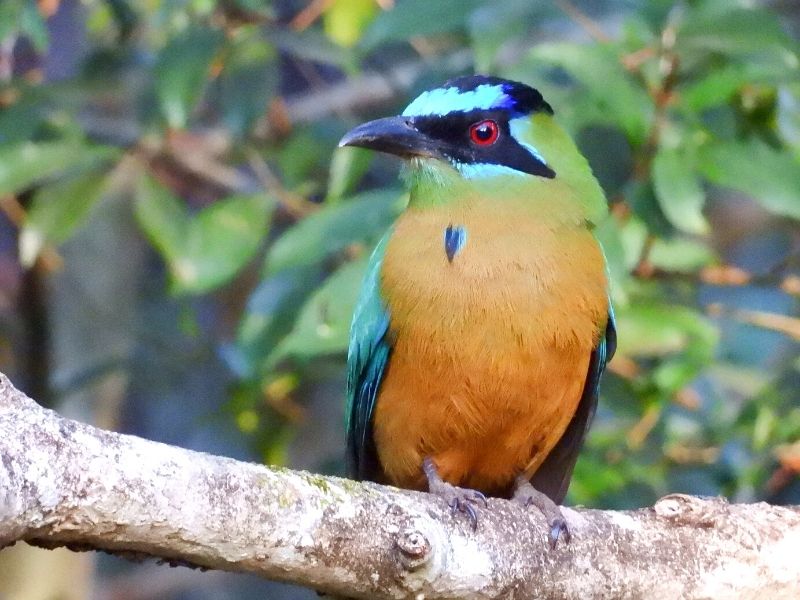
One of the larger motmots of this species was once called the blue-crowned motmot for its electric blue ring on its crest. These birds prefer to sit still so spotting them can be difficult; however, they are frequent visitors to gardens for easy meals of fruit and insects.
Keel-billed Toucan
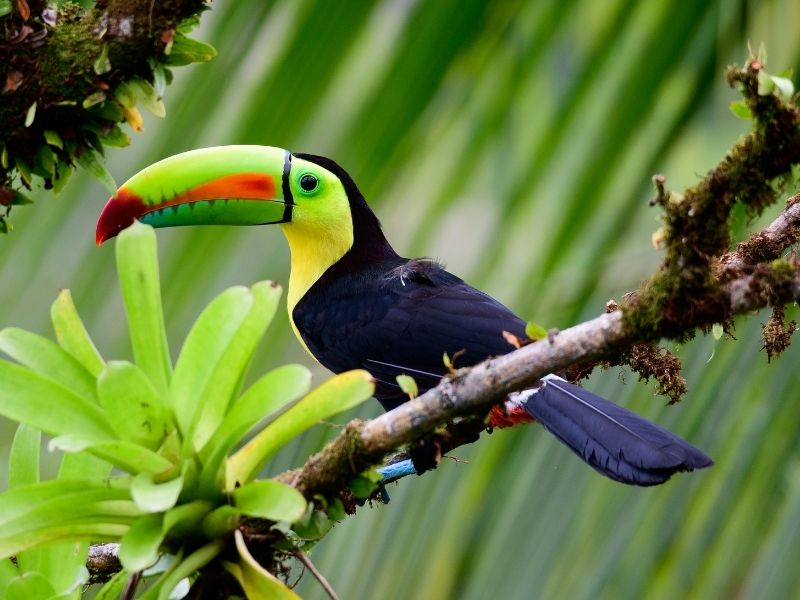
The Keel-billed toucan needs no introduction. With its brightly colored bill, this toucan is always worth looking for. Keel-billed toucans are fairly common existing across the country in jungles and inhabited areas.
Blackcrested Coquette

At just 3 inches the coquette is a small hummingbird with a smaller distribution. Located only in the northern Caribbean foothills this hummingbird sports a crest that makes them unmistakable.
Green Violet-ear Hummingbird

These small hummingbirds have been described as flying jewels. With their iridescent green plumage, these hummingbirds make the reward of photographing them well worth the challenge. Violet ears are common in the middle and higher elevations where flowering plants are found. They will also swarm feeders making them common porch guests.
Orangebellied Trogon
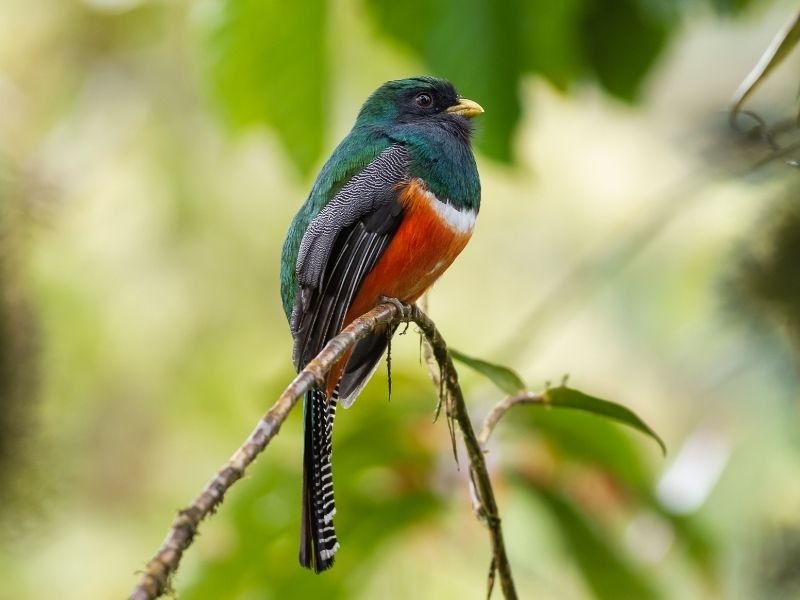
One of the species of trogon you will encounter in Costa Rica the orange-bellied sports an emerald head and back with the easy to distinguish orange belly, hence the name. the orange belly is common in wet mountain forests of the northern part of the country.
White-Throated Magpie-Jays

These large jays are a common sight in the more arid Pacific region of Costa Rica. Traveling in flocks these blue-backed birds are identifiable by their white throat and breast patch and long steel-blue tail feathers. Males feature more striking coloration with longer tail feathers and a crest of usually black feathers.
Broad-billed Motmot
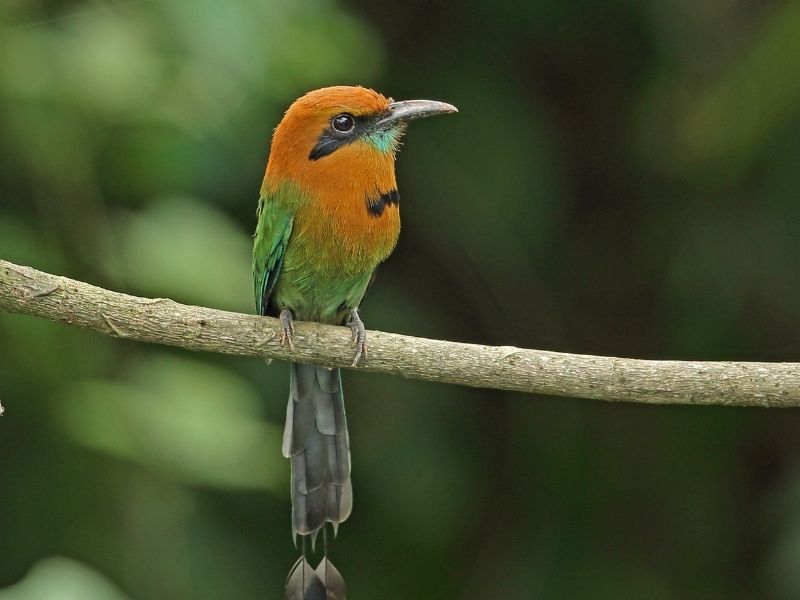
Unlike the Lesson’s Motmot, the broadbill features much more natural colors. With a cinnamon head and black eye band, this bird appears almost stumpy from its thicker beak or bill, giving the impression of a larger head. Almost like it’s trying to draw attention away, the broadbill has a gorgeous teal-colored tail that ends in a spade shape. These birds are often found in the lower elevations of the Caribbean coast.
Bluegray Tanager
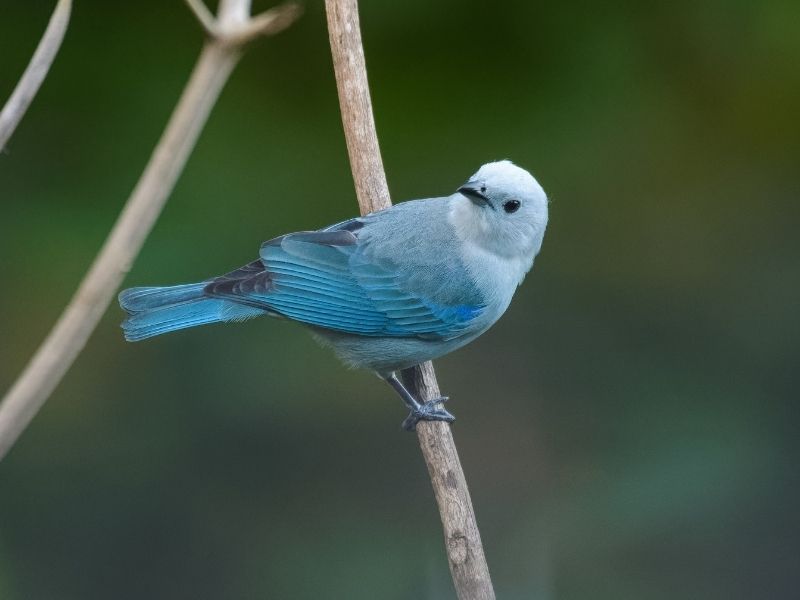
The most common of the tanagers seen throughout the country. Depending on conditions these birds can look pale gray or almost pure blue. With this shifting color, no two pictures are ever alike.
Snowcap Hummingbird
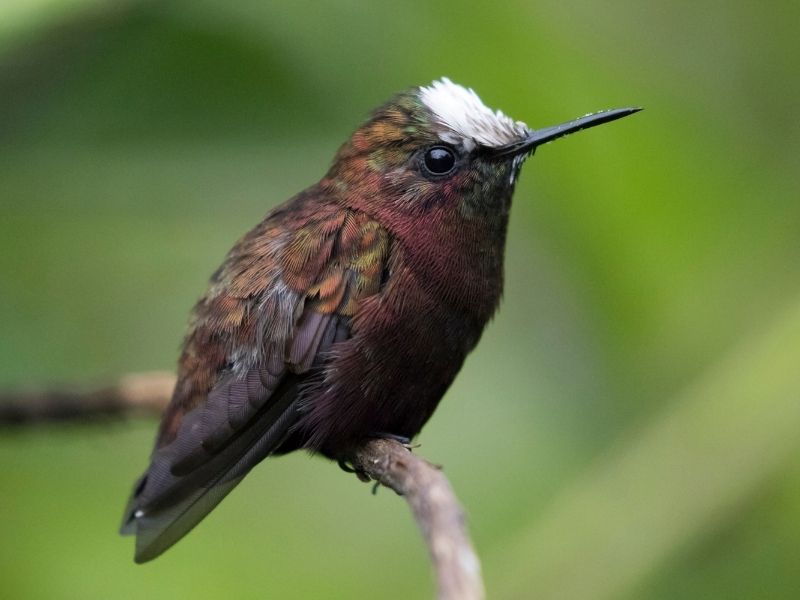
One of 50 species of Costa Rican hummingbirds, the snowcap gets its name from its white head. This short-billed hummingbird is a favorite for birders and can be found near flowering plants on the forest edge.
Roseate Spoonbill
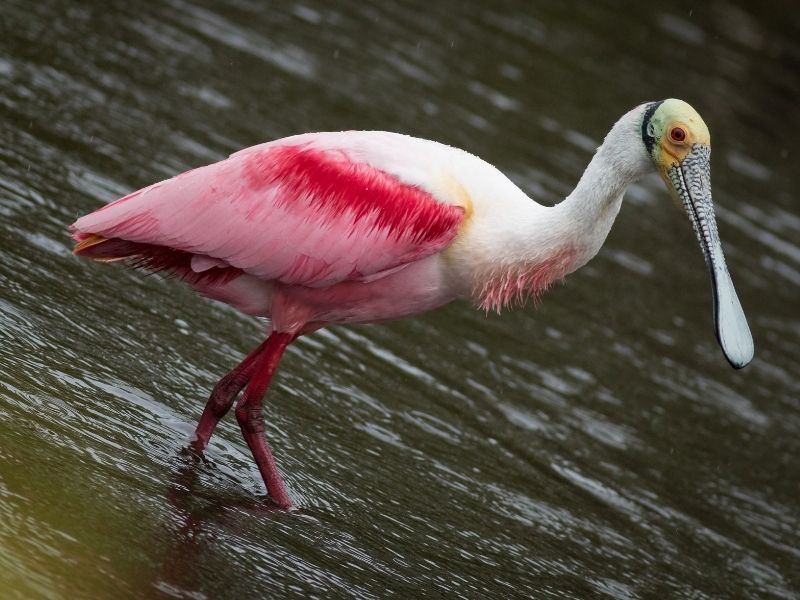
At first glance, the spoonbill could be mistaken for a flamingo. These wading birds turn pink in adulthood from a diet high in carotene from the shellfish they eat. Spoonbills can be found along most of the shallow coastal waterways and mangroves of Costa Rica.
Fiery-billed Aracari

The aracari is a breathtaking toucan with an orange-red bill and jet-black head. While not as common as the other toucans this smaller relative travels in highly social flocks so where there’s one there’s more.
Bare-necked Umbrellabird
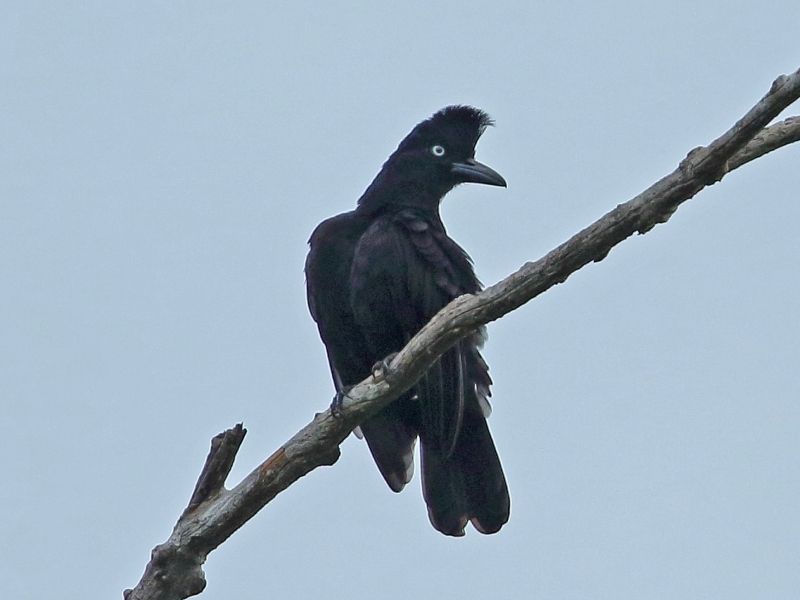
A rare sight even in the verdant northern region the umbrella bird is unmistakable from any other. Jet black this crow-sized bird sports a large pompadour style crest and a red throat sack that the males inflate during displays of courtship.
Crested Caracara

This addition to the list may seem out of place but for the birder who is looking for a raptor (not the dinosaur, the bird of prey) built for a purpose they should look no further than the caracara. This large member of the falcon family prefers to forage for carrion but will use its long legs to snatch reptiles too. Keep an eye on the sky while in open fields and marshland for a gliding caracara.
Green Macaw

Green macaw is the largest in the macaw family. These fast-flying parrots are a wonder to photograph in flight. Commonly seen in the Caribbean lowlands, these big birds can often be heard before they are seen.
Speckled Tanagers
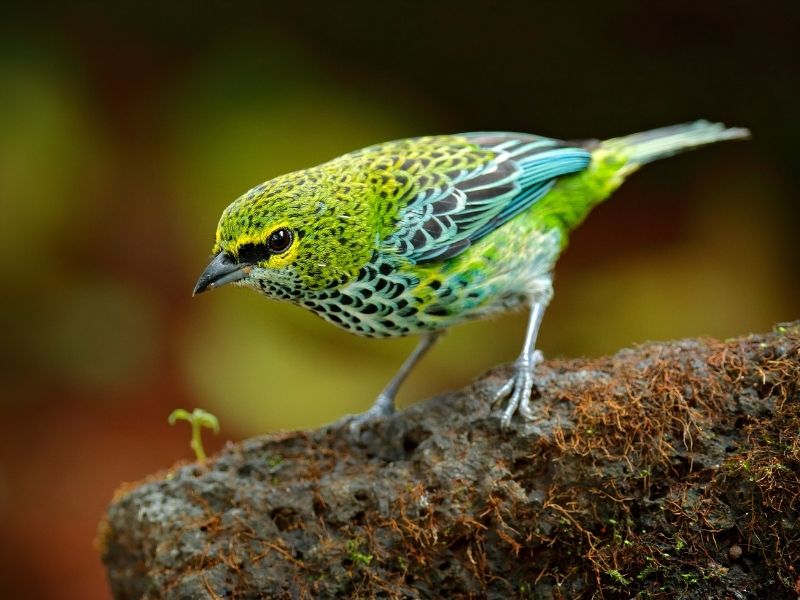
Featuring a mix of blue and yellow the speckled tanager is an easily identifiable bird. They tend to flock with other species found in the wet foothills of Costa Rica. They are both easy to find and easy to spot.
Turquoise Cotinga
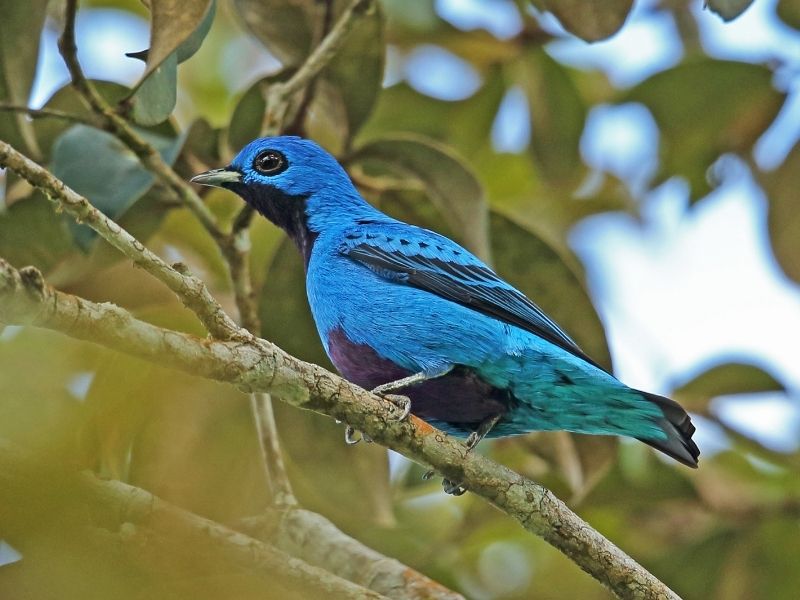
These birds are bright blue with males sporting a purple patch on their chest and throat, females are pale with black speckling in their breasts. Sightings of the turquoise continua are uncommon to its and limited habitat of the forested lowlands. looking for fruit trees is the easiest way to locate them.
Clay-colored Thrush

It would be unacceptable on a list of birds of costa Rica to not include the national bird of Costa Rica. Found throughout the county and close to people this dusky-colored thrush was made the national symbol in 1977. The males begin their mating calls at the same time as the rainy season; sign farmers have long taken as good luck.
Sunbittern

These small wading birds can be found near the shallows of most waterways. From the profile, the sunbittern’s plumage is rather bland but when they spread their wings they reveal a pattern of oranges and reds that are bested only by the butterflies.
Best Time To Visit Costa Rica

Sustainable Eco-Lodges in Costa Rica

16 Most Sustainable Eco-Lodges in Costa Rica
Eco-friendly Things to Do in Costa Rica

36 eco-friendly things to do in Costa Rica
Emese Maczko is a travel blogger behind Eco Lodges Anywhere. Having explored several destinations around Europe, the US, Indonesia, and Australia, and resided in Germany, the United Kingdom, and Luxembourg, Emese possesses a keen understanding of diverse cultures and an appreciation for the beauty of each destination she visits. She advocates for sustainable travel and ecotourism.


